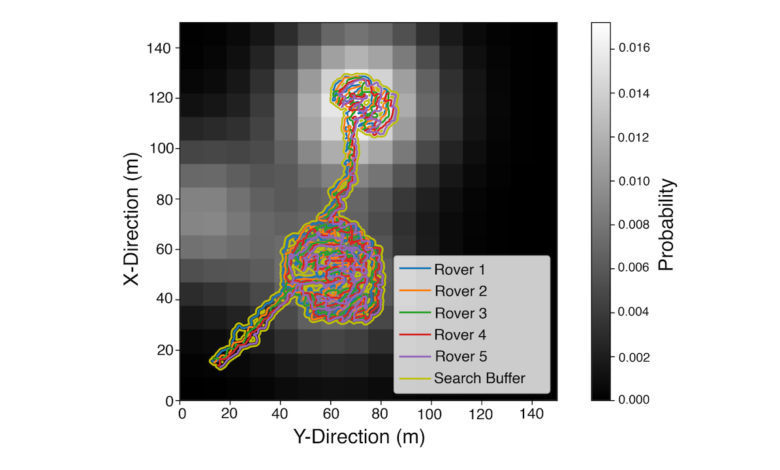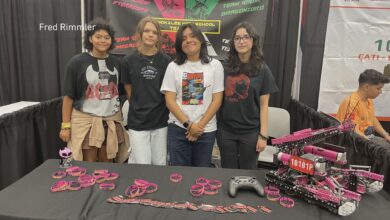A Novel Methodology for Autonomous Planetary Exploration Using Multi-Robot Teams

A representative example of fully coordinated rover team trajectories over a full mission scenario — cs.RO
One of the fundamental limiting factors in planetary exploration is the autonomous capabilities of planetary exploration rovers.
This study proposes a novel methodology for trustworthy autonomous multi-robot teams which incorporates data from multiple sources (HiRISE orbiter imaging, probability distribution maps, and on-board rover sensors) to find efficient exploration routes in Jezero crater.
A map is generated, consisting of a 3D terrain model, traversability analysis, and probability distribution map of points of scientific interest. A three-stage mission planner generates an efficient route, which maximises the accumulated probability of identifying points of interest.
A 4D RRT* algorithm is used to determine smooth, flat paths, and prioritised planning is used to coordinate a safe set of paths. The above methodology is shown to coordinate safe and efficient rover paths, which ensure the rovers remain within their nominal pitch and roll limits throughout operation.
Sarah Swinton, Jan-Hendrik Ewers, Euan McGookin, David Anderson, Douglas Thomson
Comments: 6 pages. 10 figures. This work has been submitted to the IEEE for possible publication. Copyright may be transferred without notice, after which this version may no longer be accessible
Subjects: Robotics (cs.RO)
Cite as: arXiv:2405.12790 [cs.RO] (or arXiv:2405.12790v1 [cs.RO] for this version)
https://doi.org/10.48550/arXiv.2405.12790
Focus to learn more
Submission history
From: Sarah Swinton
[v1] Tue, 21 May 2024 13:40:54 UTC (3,276 KB)
https://arxiv.org/abs/2405.12790
Astrobiology,




